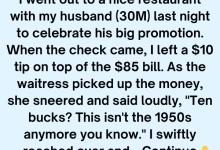If you want to have a healthy and green, you should read on learn a few ways to be better with the trash you do produce.
It’s okay to admit that while it’s 2021, and words like “sustainability” and “recycled,” and “green living” can be found everywhere from fashion brands to your favorite magazine, people still create trash. Zero-waste, while being something to strive for, is not necessarily possible for everyone.
For those new to the sustainable lifestyle, attempting the switch to zero waste can be an overwhelming and daunting task to take on all at once. People are still learning, and over time, each small change you make can help make a larger, lasting impact on the environment. Here are how to can smarter with your trash.
1. Make product switches

Christen Bradbury, the owner of Love the Earth Co. and a self-taught environmentalist, suggests first starting by paying attention to the packaging your preferred goods come in and where you can, make switches to truly recyclable, reusable, or compostable options.
“For example, choosing products that have recyclable or compostable packaging (for example, bar soap wrapped in cardboard rather than liquid soap in a plastic bottle). Filling up on food and cleaning staples at your local bulk store using BYO containers, and choosing chocolate wrapped in foil rather than plastic,” she says. “This will lead to you send more things to the recycle and compost bins.”
2. Be aware of what you are throwing away

Did you know items like batteries, electronics, light bulbs, and paint are restricted from landfills? They are too dangerous to introduce to soil and waterways? Bradbury explained that those items (and other items like them) often have designated drop points so they can be processed properly.
To find out what to do with these items in your area, call your local solid waste district to find out if your community has a collection program or upcoming collection event. If you don’t want to call, a quick Google search with the terms “recycle light bulbs near me” or “recycle paint near me” will give you information on drop-off spots in your area. For example, Home Depot has a spot to drop off batteries, as the home improvement store has partnered with Call2Recycle, a non-profit battery recycling program.
3. Have different waste bins for different items (and label them!)

It can be hard to remember what items can go in the trash, what can be recycled, and what shouldn’t even go into your trash can. (Plus this can change from place to place.) Josh Prigge, an environmental sustainability professional and zero waste expert for over 10 years, suggests checking the website of your waste and recycling service providers.
Then make signs for your household that indicate what items go in which containers, and the accepted recycling materials. This way, when those in your home (guests included) go to throw something away, no thought is really needed — the information is right there in front of you.
“Also make sure that each item that ends up in the recycling bin is clean,” says Prigge. “If a pizza box has grease on it; the part with grease cannot be recycled.”
4. Compost food waste instead of throwing it in the trash

According to experts, food waste accounts for 22 percent of the trash that ends up in landfills. One of the largest impacts consumers can have on landfills is to compost that waste.
Homeowners can start by making a pile in the yard with discarded fruit and vegetable waste. City dwellers can participate with small indoor or balcony composting bins.
For those unable to compact at home. Lennick recommends finding local grocery stores or farmer’s markets that offer a pickup/drop-off service. Community gardens will take food waste donations too.
“Commercial facilities will also accept fish, meat, and compostable straws/cups/silverware which won’t break down in-home units,” says Lennick. “The only place composting doesn’t happen is in landfills due to their lack of oxygen and low temperatures.”
Trash made easy.







